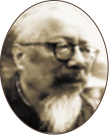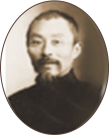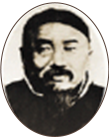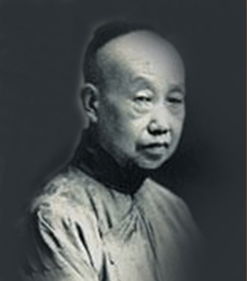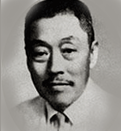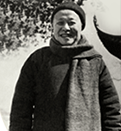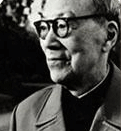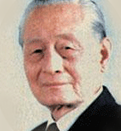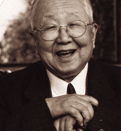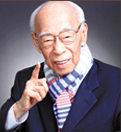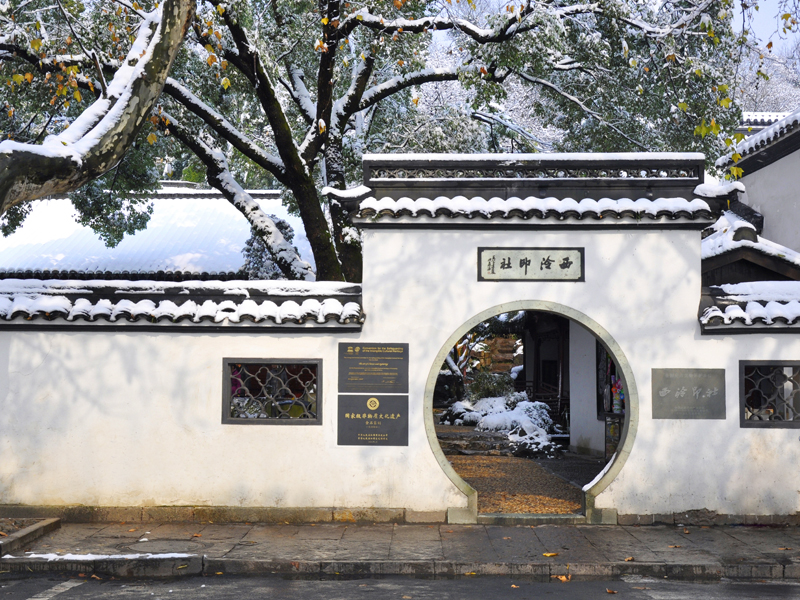
Hangzhou is located in the south-east of China with excellent geographical situation, and the metropolis of Three Wu, Qiantang (especially Hangzhou) has been a bustling city since ancient times. As one of the seven ancient metropolis of China, Hangzhou has profound cultural and historical heritage and beautiful exquisite West Lake natural and cultural landscape, known as "paradise on earth". 5000 years ago, the Liangzhu Culture that w... [details]
Asakura Fumio (1883-1964), a famous Japanese sculptor, the first President of Japan Art Academy, was an admirer of Wu Changshuo's art. In 1921, Asakura Fumio made two bronze bust statues of Wu Changshuo, one of which remained ... [details]
-
- Helu
- Enjoyment Pavilion
- Avatamsaka Sutra Pagoda
- Tiny Dragonwell Cave
- Tijin House
-
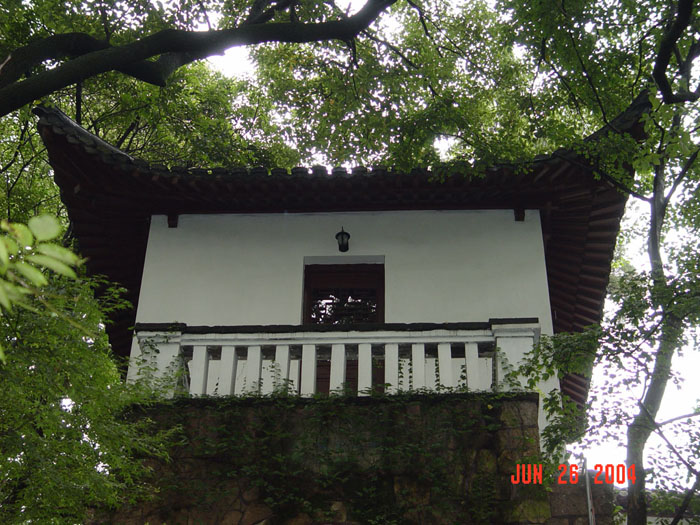 Helu: It was built in 1923 after Ding Ren donated the Tijin House, and was named after Ding Ren's literary name. Ding once got the "Helu" seal which was engraved by Engraver Zhao Zhiqian in late Qing Dynasty for his maternal grandfather Wei Jiasun, thus he took over his literary name.
Helu: It was built in 1923 after Ding Ren donated the Tijin House, and was named after Ding Ren's literary name. Ding once got the "Helu" seal which was engraved by Engraver Zhao Zhiqian in late Qing Dynasty for his maternal grandfather Wei Jiasun, thus he took over his literary name. -
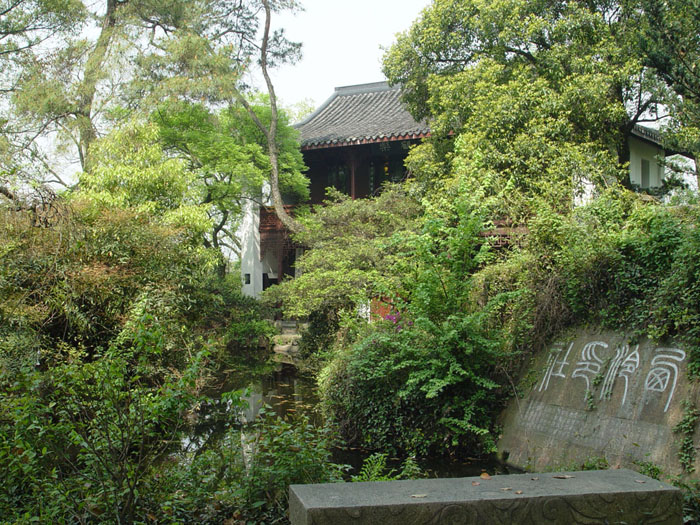 Enjoyment Pavilion: It was built in 1920 with donation of industrialist Wu Shanqing. In summer of 1927, when Wu Changshuo travelled in Hangzhou, he lived here. It is now served as Wu Changshuo Memorial Hall.
Enjoyment Pavilion: It was built in 1920 with donation of industrialist Wu Shanqing. In summer of 1927, when Wu Changshuo travelled in Hangzhou, he lived here. It is now served as Wu Changshuo Memorial Hall. -
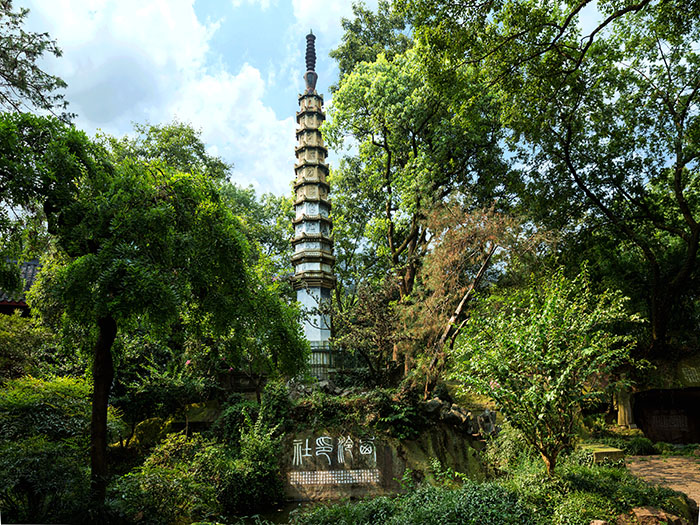 Avatamsaka Sutra Pagoda: It was built in 1924 on the premises of the old Sizhao Pavilion. The pagoda was in octagonal, and with eleven floors, every two of which were carved cornices, eaves and hung bells. Buddha was carved on the eight sides of the upper eighth floor, and the ninth and tenth floors were carved with Diamond Sutra written by Jin Nong; the eleventh floor was carved Avatamsaka Sutra written by ZhouChengde, and "Inscription of Xiling Avatamsaka Sutra Engraving" by Hong Yi.
Avatamsaka Sutra Pagoda: It was built in 1924 on the premises of the old Sizhao Pavilion. The pagoda was in octagonal, and with eleven floors, every two of which were carved cornices, eaves and hung bells. Buddha was carved on the eight sides of the upper eighth floor, and the ninth and tenth floors were carved with Diamond Sutra written by Jin Nong; the eleventh floor was carved Avatamsaka Sutra written by ZhouChengde, and "Inscription of Xiling Avatamsaka Sutra Engraving" by Hong Yi. -
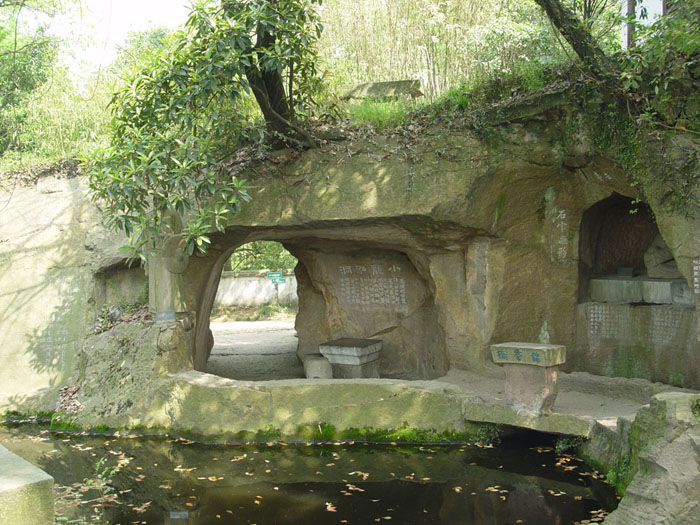 Tiny Dragonwell Cave: It was cut by one of the founder of the Society Ding Ren's donation, and was completed in July, 1927. The west wing of the cave was engraved painting of Wang Yiting, and Songzi Guanyin Picture with Wu Changshuo's inscription, so as to echo the Dragonwell Cave on Hangzhou Flying Peak, thus it is named Tiny Dragonwell Cave.
Tiny Dragonwell Cave: It was cut by one of the founder of the Society Ding Ren's donation, and was completed in July, 1927. The west wing of the cave was engraved painting of Wang Yiting, and Songzi Guanyin Picture with Wu Changshuo's inscription, so as to echo the Dragonwell Cave on Hangzhou Flying Peak, thus it is named Tiny Dragonwell Cave. -
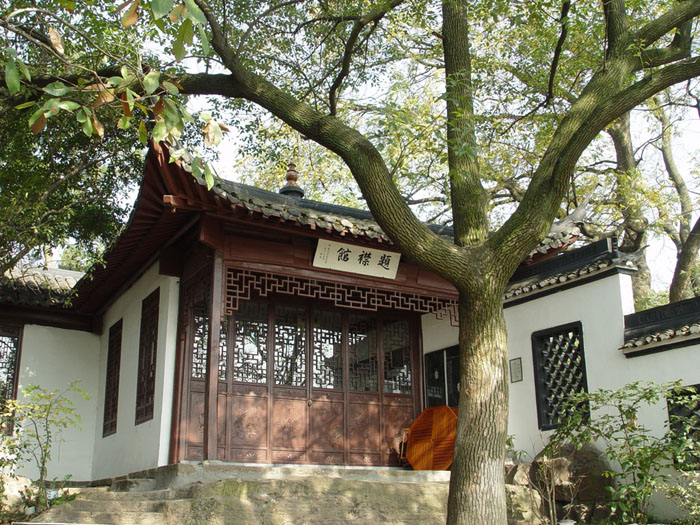 Tijin House: It was built in 1914, which was funded by Haishang Tijin House Epigraphy Association through raising work of calligraphy and paintings to sell for fund.
Tijin House: It was built in 1914, which was funded by Haishang Tijin House Epigraphy Association through raising work of calligraphy and paintings to sell for fund.
-
- Sizhao Pavilion
- Return Simplicity Hut
- Dun'an
- Saint Admiring Pavilion
- Shanchuan Yulu Library
-
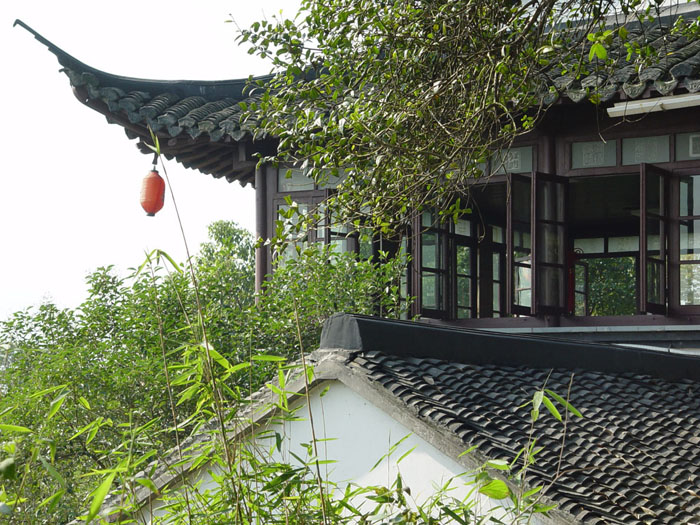 Sizhao Pavilion: In Song Dynasty, Sizhao Pavilion was located on the peak of Gushan. In 1914, Xiling Seal Engraver's Society undertook reconstruction of it to restore the relics. In 1924, it was moved to the present location because of the construction of Avatamsaka Sutra Pagoda.
Sizhao Pavilion: In Song Dynasty, Sizhao Pavilion was located on the peak of Gushan. In 1914, Xiling Seal Engraver's Society undertook reconstruction of it to restore the relics. In 1924, it was moved to the present location because of the construction of Avatamsaka Sutra Pagoda. -
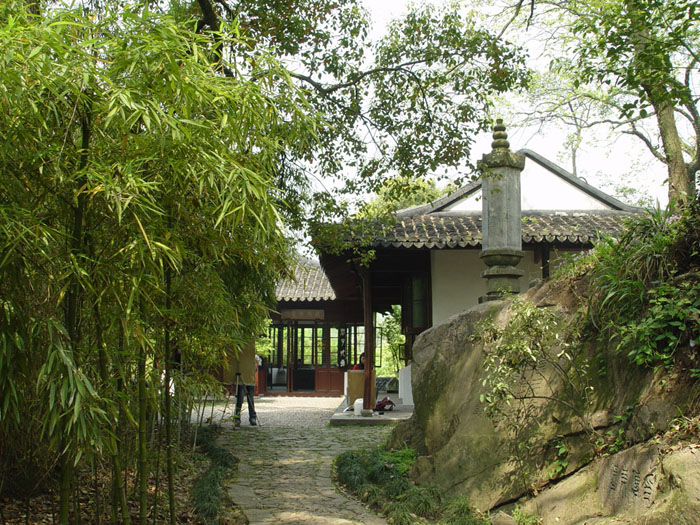 Return Simplicity Hut: It was built with the donation of the famous industrialist Wu Shanqing, and was named "Return Simplicity" in view of Wu's family teaching "giving priority to simplicity".
Return Simplicity Hut: It was built with the donation of the famous industrialist Wu Shanqing, and was named "Return Simplicity" in view of Wu's family teaching "giving priority to simplicity". -
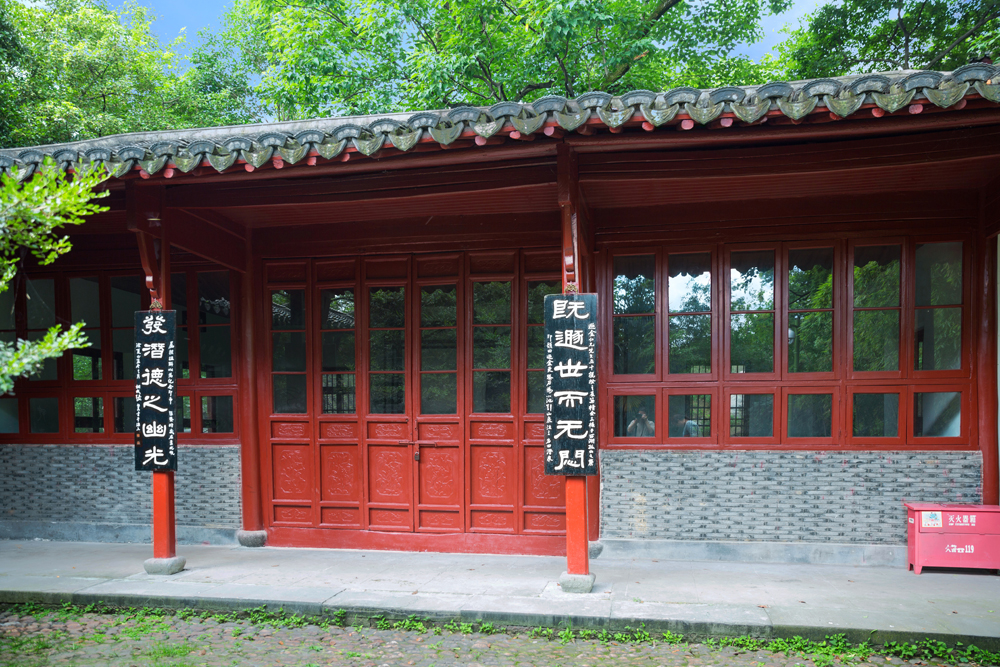 Dun'an: "Dun'an" is one of Wu Yin's literary name. In 1915, Wu Yin purchased the land and house, thus named it with his literary name, implicating that people with talents and morality loves to live in seclusion.
Dun'an: "Dun'an" is one of Wu Yin's literary name. In 1915, Wu Yin purchased the land and house, thus named it with his literary name, implicating that people with talents and morality loves to live in seclusion. -
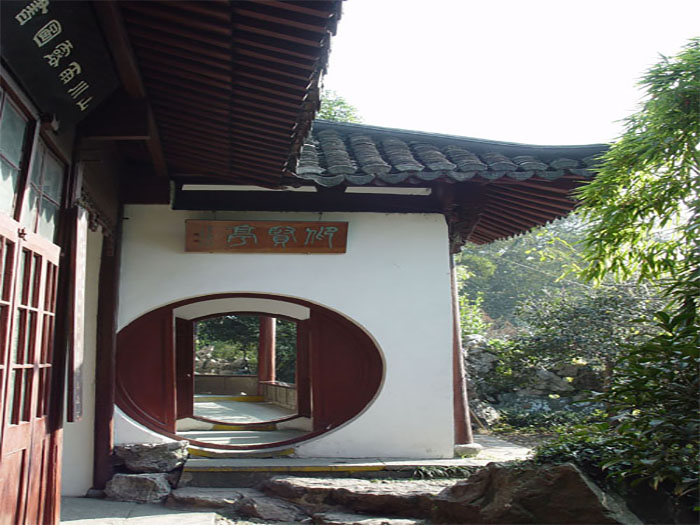 Saint Admiring Pavilion: The Saint Admiring Pavilion was built in Gushan in Emperor Tianshun's reign in Ming Dynasty, but was devastated later on. In 1905, it was rebuilt and became the first building of Xiling Seal Engraver's Society, and other building were successively built around it.
Saint Admiring Pavilion: The Saint Admiring Pavilion was built in Gushan in Emperor Tianshun's reign in Ming Dynasty, but was devastated later on. In 1905, it was rebuilt and became the first building of Xiling Seal Engraver's Society, and other building were successively built around it. -
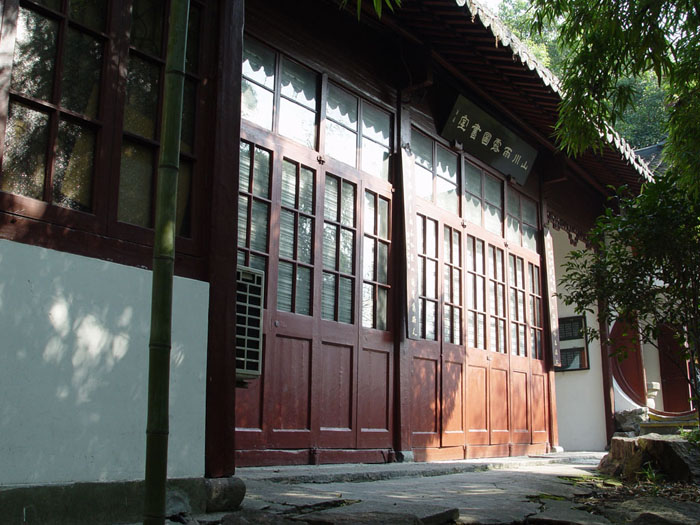 Shanchuan Yulu Library: It was built in 1912, and was first a place for the engravers of the society to discuss seal gathering, seal collection, and to comment on seals. The name of it was derived from the scholar of Qing Dynasty Fang Gang's couplets "library of mountains and rain, water bamboo house with wind, moon, qin and wine" in Changshu Carefree Journey.
Shanchuan Yulu Library: It was built in 1912, and was first a place for the engravers of the society to discuss seal gathering, seal collection, and to comment on seals. The name of it was derived from the scholar of Qing Dynasty Fang Gang's couplets "library of mountains and rain, water bamboo house with wind, moon, qin and wine" in Changshu Carefree Journey.
-
- Shijiao Pavilion
- Bamboo Pavilion
- Bai Hall
-
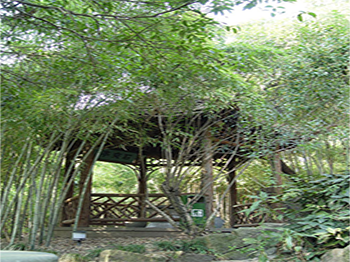 Shijiao Pavilion: In 1912, Ye Ming proposed to build it. Derived from Su Dongpo's verse "Rather eating without meat than living without bamboo", the saying "Rather eating without meat than living without epigraphy" was renown, and thus the pavilion was named Shijiao Pavilion.
Shijiao Pavilion: In 1912, Ye Ming proposed to build it. Derived from Su Dongpo's verse "Rather eating without meat than living without bamboo", the saying "Rather eating without meat than living without epigraphy" was renown, and thus the pavilion was named Shijiao Pavilion. -
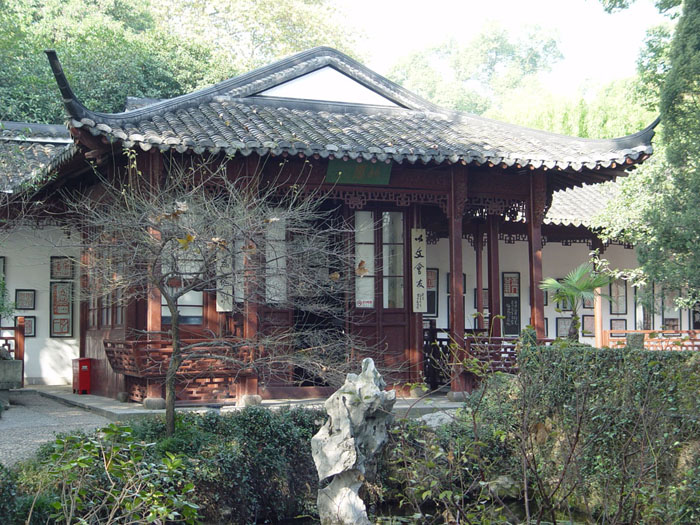 Bamboo Pavilion: Its origin can be date back to Tang Dynasty. According to legend, the famous poet Bai Juyi gave order to build it and composed Suzhu Pavilion for it. The present pavilion was rebuilt in the 2cd year of Guangxu (1876) in Qing Dynasty.
Bamboo Pavilion: Its origin can be date back to Tang Dynasty. According to legend, the famous poet Bai Juyi gave order to build it and composed Suzhu Pavilion for it. The present pavilion was rebuilt in the 2cd year of Guangxu (1876) in Qing Dynasty. -
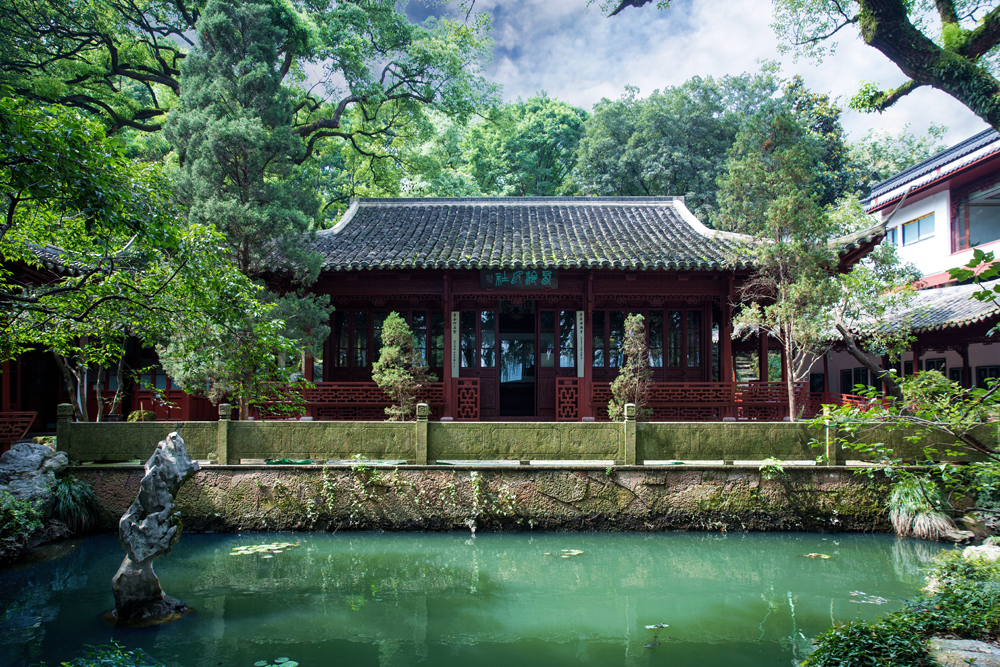 Bai Hall: It was the Guanghua Temple in Chen Dynasty, and because the temple has two cypresses, it was called "Bai Hall". It was rebuilt in the 2cd year of Guangxu (1876) in Qing dynasty, and was now turned into the display room of history of the society. The door lintel hangs a board inscribed "Xiling Seal Engraver's Society" by the first president of the Society Wu Changshuo.
Bai Hall: It was the Guanghua Temple in Chen Dynasty, and because the temple has two cypresses, it was called "Bai Hall". It was rebuilt in the 2cd year of Guangxu (1876) in Qing dynasty, and was now turned into the display room of history of the society. The door lintel hangs a board inscribed "Xiling Seal Engraver's Society" by the first president of the Society Wu Changshuo.
